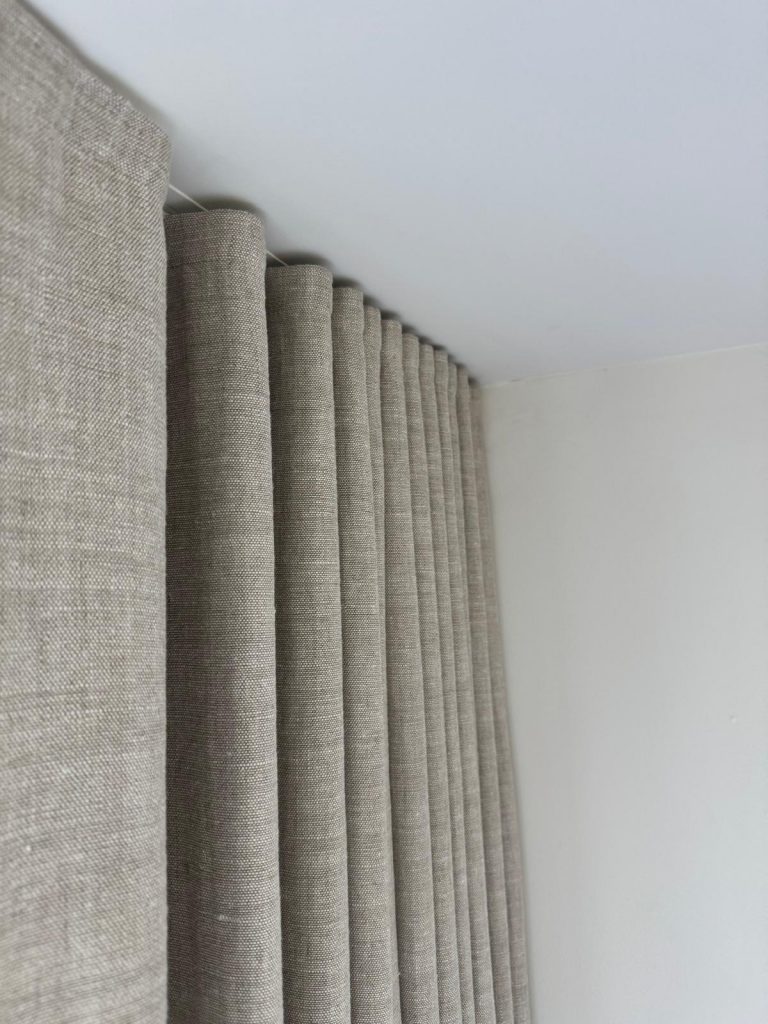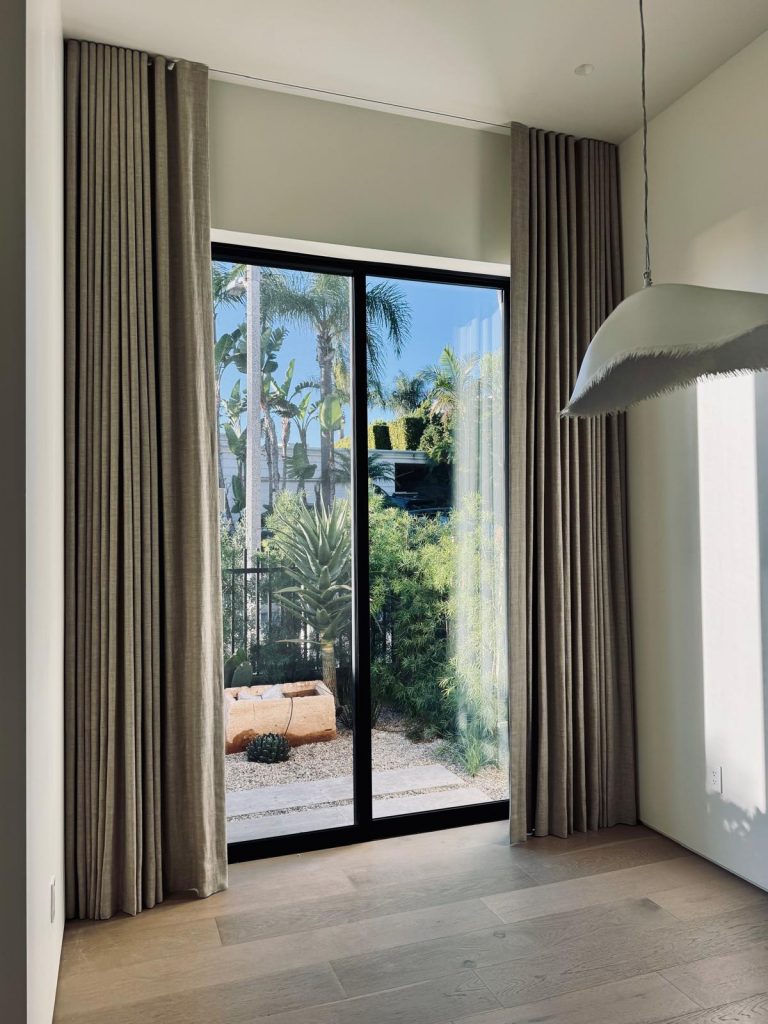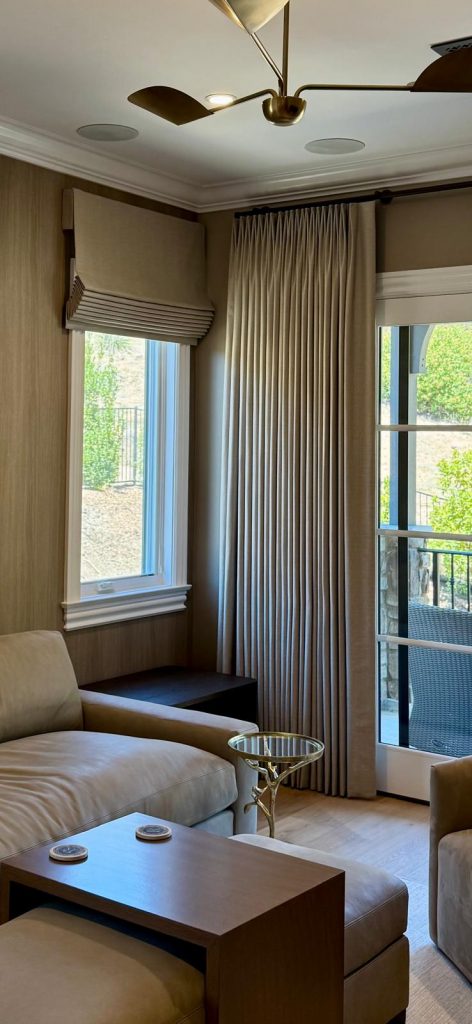
Ripplefold Drapery: clean lines and smooth tracks
What is ripplefold drapery and why do people love it?
Ripplefold drapery rides on carriers that space the fabric into clean, even waves. The look stays consistent from top to bottom, so you don’t have to “dress” the folds every day. It glides with a light pull, stacks tight, and works in modern interiors from Los Angeles condos to coastal homes in Malibu. The result is calm lines, easy use, and a room that feels taller and tidier.
Ripplefold vs pinch pleat: how do they differ in practice?
Ripplefold vs pinch pleat is a style decision first. Ripplefold drapery reads minimal and architectural, great with slim baseboards and clean cabinetry. Pinch pleat is dressier and sculpted. If you want a modern, continuous wave with a small stack and smooth travel, ripplefold drapery wins. If you want pronounced pleats and a traditional edge, pinch pleat is the pick.


Ceiling track drapery: where it makes the biggest impact
Ceiling track drapery nearly disappears, letting fabric run from ceiling to floor. In rooms with wall-to-wall glass—Pacific Palisades, Santa Monica, Orange County new builds—it visually lifts the ceiling and hides uneven headers. Tracks also allow returns that hug the wall better than most rods.
Ripplefold stack width: will I keep more glass?
Yes. Because the wave is shallow and consistent, ripplefold stack width is typically narrower than rings on a rod. On big sliders in Calabasas, that means more glass stays open when panels are parked. Planning matters: measure where handles sit and decide left, right, or split draw to keep traffic flowing.
Fabrics and linings that hang beautifully
Choose stable fabrics that hold a curve: linen blends, cotton-linen weaves, textured polyester with privacy or dimout lining. For bedrooms, blackout lining works well without making the wave bulky. In bright rooms, darker colors reduce glare; lighter tones feel airy but may reflect more light.
Daily use, kids, pets, and maintenance
Tracks avoid dangling cords and are easy for kids to move. With motorized tracks, tall spans open and close at a tap. Maintenance is simple: occasional vacuuming with a soft brush and spot care as the fabric allows.
When ripplefold may not be the best choice
If you want heavy structure, pronounced pleats, or historic detail, pinch pleat can be a better fit. If the wall is highly uneven, you may combine ripplefold with returns or consider an alternate header that seals edges more aggressively.
Thinking About Ripplefold Drapery?
Want to know if ripplefold drapery is right for your windows? Write to us via the contact form — we’ll reply with a clear plan and fabric ideas.
